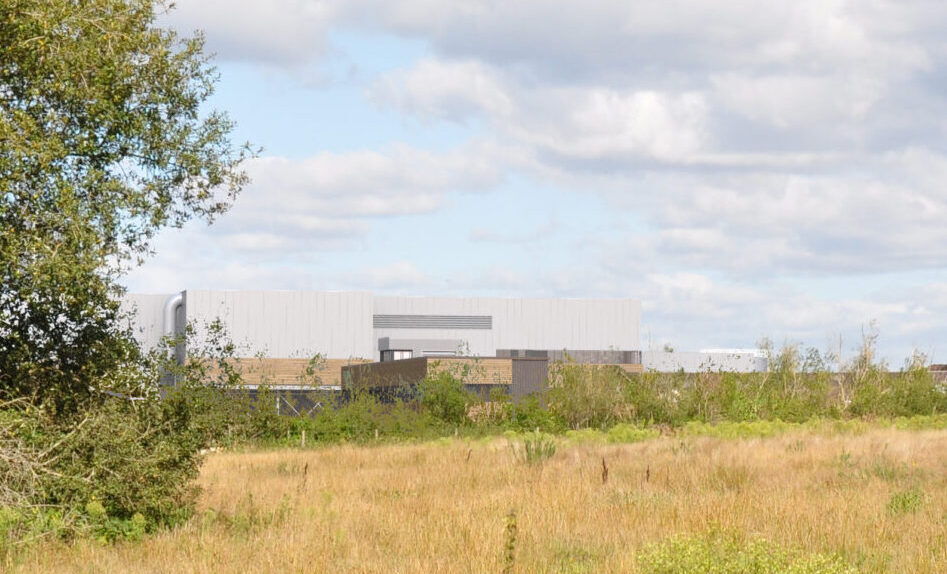Chapelgate
Energy Recovery Facility
Chapelgate ERF – A local Project to treat local Waste
Eco has been granted planning permission to construct a 60,000 tonne capacity Energy Recovery Facility (ERF) at its Eco Park near Bournemouth. This facility will accept waste from the BCP area and convert it into low carbon energy.
Update: Eco is currently undertaking a feasibility study to assess the impact of additional capacity to accept a further 45,000 tonnes. This would increase the total capacity to 105,000 tonnes. Initial assessments have indicated that, by utilising improved technology, this is achievable within the emission envelope, already consented. And with little impact to the surrounding road network.
Currently, hundreds of thousands of tonnes of leftover rubbish created by BCP and Dorset homes and businesses is taken by road out of the county, with significant amounts ending up in landfill, emitting methane, a potent greenhouse gas.
Diverting this waste from landfill via Eco’s proposed ERF will help to reduce greenhouse gas emissions by an estimated 12,850 tonnes of CO2 per year and HGV ‘waste miles’ by more than 17,000 miles per month.
The Process
Waste is accepted through a dedicated weighbridge system, where it is catalogued and weighed, before being tipped into a large feed bunker.
The waste is then combusted at high temperature. The hot flue gases are generated which is then used to heat water through a boiler to create high pressure steam.
The steam pressure turns a large turbine to generate electricity. The turbine can also generate heat to process other waste streams onsite, or can be used for heating local homes and businesses, ensuring that the facility is as efficient as possible.
After combustion, ash and metals are then recovered for recycling and use in the construction industry.
The flue gases are treated with activated carbon and lime, which interact with pollutants like acidic gases. The filtration system at the end of the process reduces emissions and captures these residues, along with dust from the boiler, ensuring that the flue gas released into the stack complies with legal emission standards.
Emissions
With any facility of this nature there a treated emissions which disperse from the chimney or stack. The team at Eco already tightly monitors the air quality around the site, to ensure that its recycling activities have no adverse effect on the local ecology.
Despite treating additional waste, and generating more low carbon energy, the emissions from the proposed, larger facility will be below those already consented and far below legal limits.
As with all Energy Recovery Facilities in the UK, the emissions are monitored in real time 24 hours per day, with all data supplied to the independent regulator to ensure compliance with agreed limits.
Job Creation
The scheme is expected to create over 10 full-time high skilled and technical jobs during operation.
Traffic
Extensive traffic modelling set out in the Transport Assessment indicates that the impacts on the adjoining highway network are low and considered imperceptible, even at peak times. Even with the additional throughput being planned for the ERF, the plant would receive an average of around 3 lorry loads an hour, which is comfortably manageable through the local infrastructure.
Key Facts
Consented Facility
Annual Feedstock Required: 60,000 tonnes Residual Waste
Energy Output: 3.4MWe (enough to power over 8,000 homes per year)
11.5MWth (enough to heat over 6,000 homes per year)
Planning Granted: 2021
Visitor and Education Facility: To support efforts by local councils to reduce waste, reuse and recycle more.
Expanded Facility
Annual Feedstock Required: 105,000 tonnes Refuse Derived Fuel (RDF)
Energy Output: 8MWe (enough to power over 17,000 homes per year)
25MWth (enough to heat over 14,000 homes per year)
Planning Submission: Expected Jan 2025
Visitor and Education Facility: To support efforts by local councils to reduce waste, reuse and recycle more
